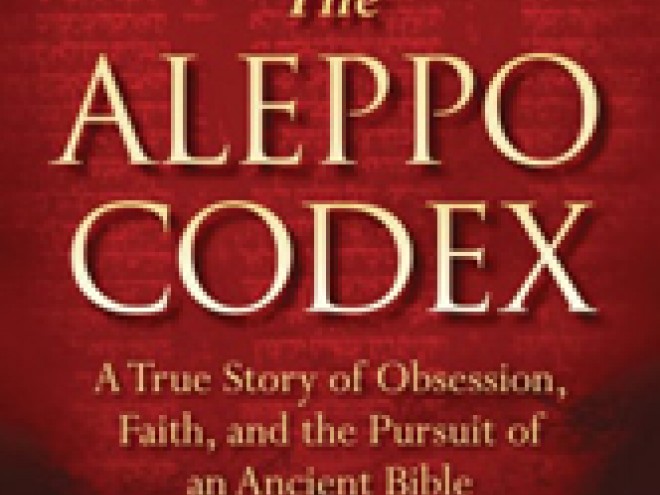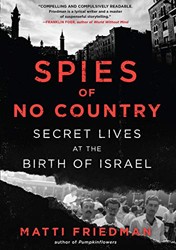Matti Friedman’s The Aleppo Codex is not, by his own admission, the book he set out to write. What began as a glimmering of interest evolved quickly into a web of mystery, intrigue, and unanswered questions as Friedman mined the story behind the legendary “Crown of Aleppo” — the oldest authoritative manuscript of the canonized Hebrew Bible, written in the tenth century by a famous scribe, used by the legendary Maimonides while writing the Mishneh Torah, and protected for centuries in the ancient synagogue of Syria’s largest Jewish community. When the Aleppo community began to disperse in the 1940s and ‘50s, after the State of Israel’s founding, the Codex found itself in transit for the first time in thousands of years, leaving its burnt-down sanctuary and traversing the border to Israel. It is here that the story hiccups: Faced with the half-told story of a controversial trial, rumors of missing pages, and hints of political machinations, Friedman uncovers more questions than answers at every turn, adding to his conviction that the book that was once a community’s greatest pride has been ruined by a “conspiracy of silence,” a dearth of reliable information, and intentional ambiguity. Friedman shines as a magnificent and thoughtful storyteller, shifting between time and place with facility, bringing the story of the Codex until 1948 to life and weaving it skillfully with the present and recent past. With Friedman’s crusade at its center, The Aleppo Codex might be an unintentional thriller but it is a great one nonetheless, introducing us to compelling, sometimes shifty characters, and drawing us into the sad story of a relic that was destroyed by the humans entrusted with its care. Thoroughly — even obsessively — researched, Friedman’s book brings to light a wealth of information never made public before. It may not solve the mystery, but it comes pretty close.
Mining the Periphery
by Matti Friedman
I began working as a journalist at the Jerusalem Report, an Israeli newsmagazine published in English every two weeks. I mention the publication schedule because in retrospect it is one of those purely technical limitations, like left-handedness or color-blindness, which end up altering the way we think in ways that become apparent only much later.
Because the magazine was published just twice a month, and because there was a lag of a week between the time we finished writing our stories and the time copies reached readers, we could not cover the central news story of the day. If we wrote about whatever it was that all of the hundreds of other reporters in Israel were covering, the magazine would be obsolete before it was printed. Instead, we had to find a story on the periphery, or under the surface, which somehow illuminated the broad sweep of events. These stories had a longer shelf life. In time, I discovered that they were also invariably more interesting. No one else was reporting what we were, so it was impossible to lean on the interpretation and approach of others. These stories took me to surprising places and revealed Israel for the complex creature that it is, rather than the caricature, positive or negative, that is so often portrayed. And so during my formative years as a reporter I learned that if I was around other journalists I was probably doing something wrong, because if there was a good story it was almost certainly somewhere else.
When I first encountered the Aleppo Codex in 2008, in a dark underground room at the Shrine of the Book in Jerusalem, the manuscript struck me as being one of those stories. This was before I had any sense of how wonderful the story really was, or of the journalistic and legal complications that would confront me as I tried to get to the bottom of it. The codex was simply, in the most literal sense, on the periphery of people’s attention — the gallery upstairs was full of onlookers viewing the Dead Sea Scrolls, but the codex’s gallery downstairs was empty.
The Aleppo Codex was not only itself a peripheral yet important story; it turned out to be a window onto another such story much deeper than the history of one manuscript.
The annals of Israel, for most onlookers, are associated with the Jewish world of Europe: Herzl, socialism, the Holocaust, the kibbutz. That is indeed one of Israel’s stories. But half of Israel’s Jews do not come from Europe. They come instead from the lost Jewish communities of the Middle East, and have a different history. Their Jewish world was far older than that of Europe, and they were not newcomers to the Middle East but natives. We think of them as the Jews of the Islamic world, but many of their communities existed long before Islam. They spoke Arabic, Kurdish, Turkish, and Persian. They brought with them to Israel an intimacy with the Middle East and, in their fresh memories of being displaced from their ancestral homes by Muslims, a first-hand sense of the cruel rules of this region. They came with an unapologetic and traditional Judaism very different from that of the Europeans. Their presence has shaped Israel into a country that is Middle Eastern, one very different from the Western implant that was imagined by Israel’s founders or is portrayed in the present by Israel’s enemies. Their story is somehow still seen as marginal, but is as important for understanding Israel in the twenty-first century as that of the Jews of Europe.
The Aleppo Codex was very much a product of their world. The manuscript was written here, on the shore of the Sea of Galilee, under Muslim rule, and moved to Jerusalem and Cairo before reaching Aleppo and remaining there for 600 years. It never left this region, and its creators and keepers all spoke Arabic. It is an apt symbol for the rise and fall of the Jewish Middle East. Like the Judaism of the Islamic world, much of the manuscript arrived in Israel in the twentieth century, and much was lost in transit. So the story of this manuscript became a way of telling another story that is also not nearly well-enough known.
So much writing about Israel seizes on tired tropes — settler, survivor, soldier, spy. The transmission of Israel’s history in English often seems stuck around the time of the Yom Kippur war, or perhaps the raid at Entebbe. If you are equipped only with these clichés, the complicated and vibrant modern-day country at the center of the Jewish world will be bewildering to you. I learned as a young reporter that understanding this country requires distance from well-worn stories and from the agreed-upon focus of the moment. That lesson, which will continue to guide my work, led to the writing of this book, sending me away from the crowds in a museum gallery one day and suggesting that I might instead find an unexpected window in the basement.




